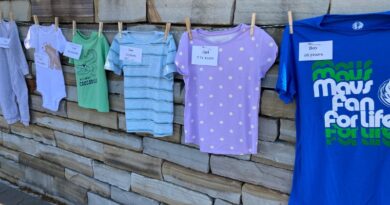With LEED Certification, ESD Adds Impressive Acronym

Pop Quiz: What do Elevation Burger, the Trinity River Audubon Center, and the athletic and wellness center at the Episcopal School of Dallas, have in common?
OK, the headline was a bit of a spoiler, but all three establishments are the first of their kinds to be LEED certified in Dallas. They’ve met certain standards set by the U.S. Green Building Council in energy and atmosphere; materials and resources; indoor environmental quality; sustainable sites; and water efficiency. More photos and a press release are just a click away. Ready, set, jump.

STEPHEN B. SWANN ATHLETIC AND WELLNESS CENTER FIRST DFW HIGH SCHOOL BUILDING TO EARN LEED GOLD CERTIFICATION FOR NEW CONSTRUCTION
DALLAS, Texas, Feb 10 – The Episcopal School of Dallas’ newly-opened Stephen B. Swann Athletic and Wellness Center is the first Dallas-Ft. Worth high school facility to be officially designated LEED® Gold Certified, New Construction and Major Renovation.
“While this award recognizes ESD’s commitment to environmental responsibility and maximization of the long-term value of our physical plant, it also exemplifies our dedication to a holistic educational focus which prepares students to be healthy, responsible and engaged citizens,” remarked The Reverend Stephen B. Swann, ESD’s Founding Rector and Headmaster. “We are grateful for the guidance of the Stone House Group, a sustainable building design consultancy headquartered in Pennsylvania, Architectural Resources Cambridge, and Beck Group, who helped bring our vision of ‘comprehensive wellness’ to fruition.”
LEED® Gold Certification is based on successful achievement in five comprehensive categories: energy and atmosphere; materials and resources; indoor environmental quality; sustainable sites; and water efficiency. Below are some of the specific criteria that the Stephen B. Swann Athletic and Wellness Center has achieved:
1. Energy and Atmosphere
- All light fixtures within 15 feet of exterior walls have daylight sensors which automatically adjust the lights based on the amount of daylight entering the room, thus reducing electricity use.
- Light fixtures in 30% of occupiable rooms have occupancy sensors which turn lights off after 15 minutes of undetected movement.
- ESD has purchased green power representing 70% of the consumption within the building.
- The building will consume 20.1% less in dollars and 17.8% less in energy than an ASHRAE baseline modeled building. That number equals $26,510 in savings annually based on the energy model.
- The building HVAC systems utilize refrigerants that minimize or eliminate the use of compounds that contribute to ozone depletion and global warming.
2. Materials and Resources
- 51% of all newly installed wood products in the building are FSC-certified, meaning the wood products were harvested in a socially and environmentally responsible way.
- 32% of the building’s materials and products were manufactured within a 500-mile radius of the Athletic and Wellness Center, reducing emissions from delivery vehicles.
- 23% of the building’s materials and products were derived from recycled material.
- 77% of waste produced during construction was recycled or salvaged rather than disposed in a landfill.
3. Indoor Environmental Quality
- An IAQ (Indoor Air Quality) management plan was developed for pre-occupancy of the building to ensure clean air circulation upon the building opening.
- All adhesives, sealants, paints, coatings, composite wood and agrifiber products, and carpets have minimal VOC’s (Volatile Organic Compounds).
- The building was designed to maximize interior day lighting and outside views.
- Air quality sensors (CO2 sensors) were installed in all densely occupied spaces and outdoor air measuring stations were installed on all HVAC equipment to ensure the proper amount of ventilation air at all times.
4. Sustainable Sites
- The storm water plan for the project was designed in a manner that runoff from the project site, including roofs and roads, is diverted directly to the school’s quarry.
- The campus was outfitted with 55 bicycle racks and several parking places for fuel efficient vehicles to allow for alternative transportation methods.
- ESD has set aside land to be kept in its natural state for the lifetime of the building. The area of this site is approximately 40% of the project site area.
- More than 50% of the building’s roof is a white roofing material which absorbs less heat, resulting in a cooler building and lower air-conditioning load.
- Of the non-roof impervious surfaces on-site, 56% have been paved with a highly-reflective material to reduce the effects of heat island.
5. Water Efficiency
- The building has reduced potable water use by 48.2% from a calculated baseline design through the installation of ultra low-flow lavatories, low-flow showers, low-flow water closets, and non-water fixtures.








